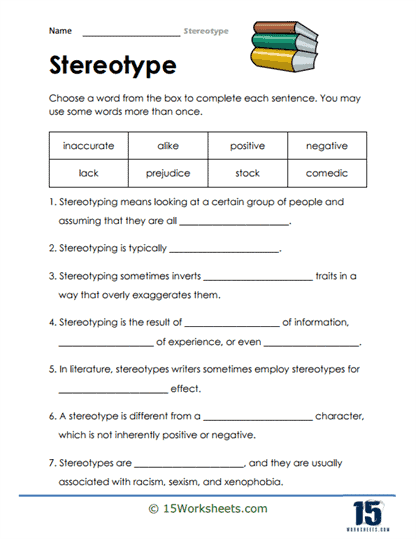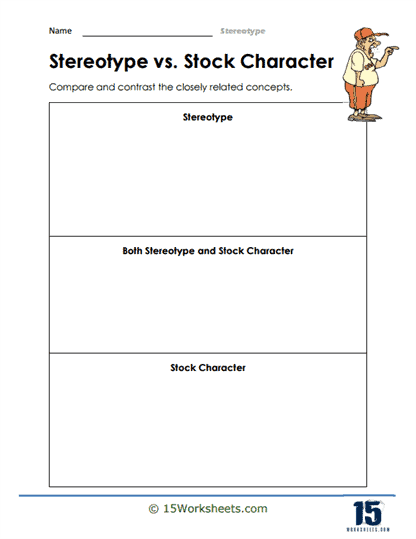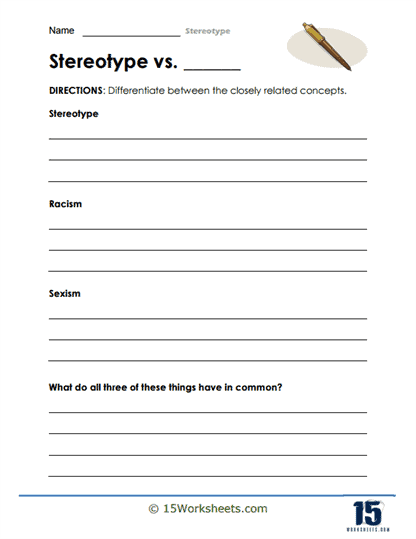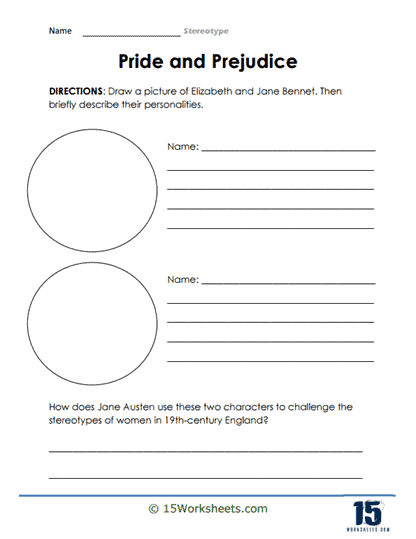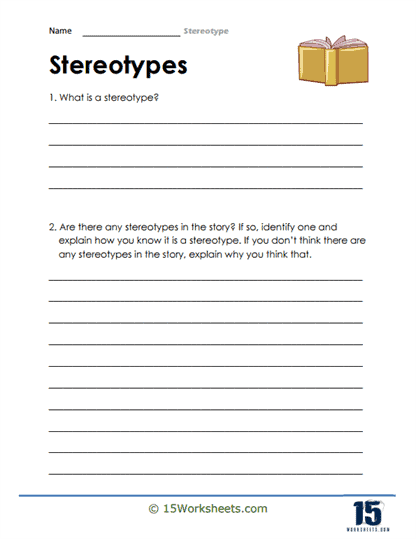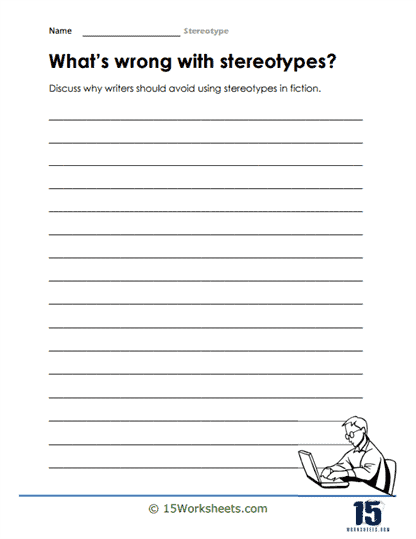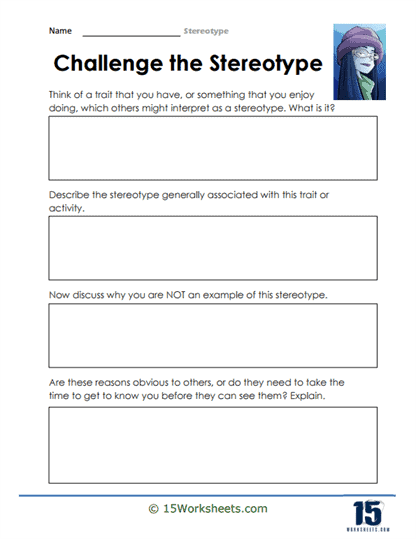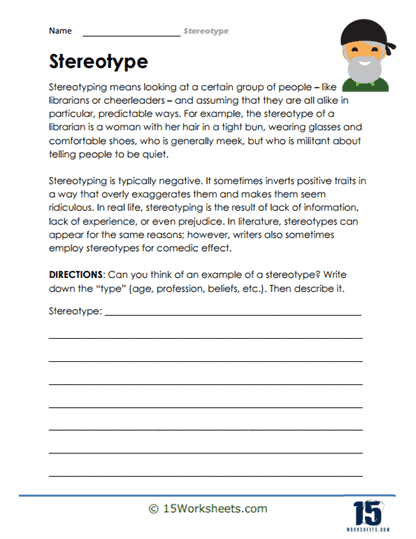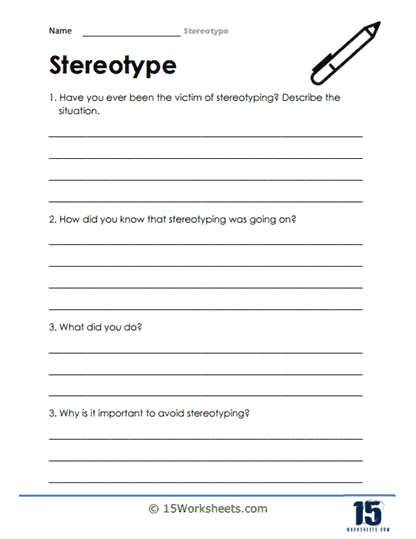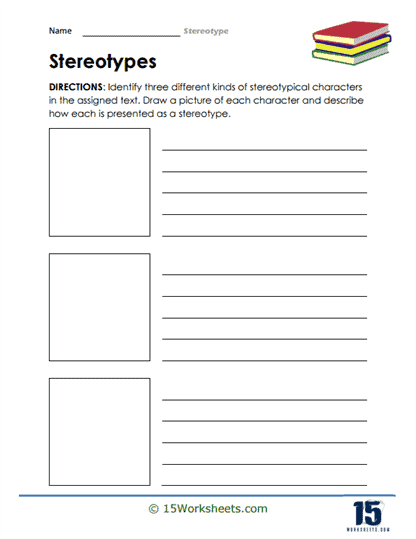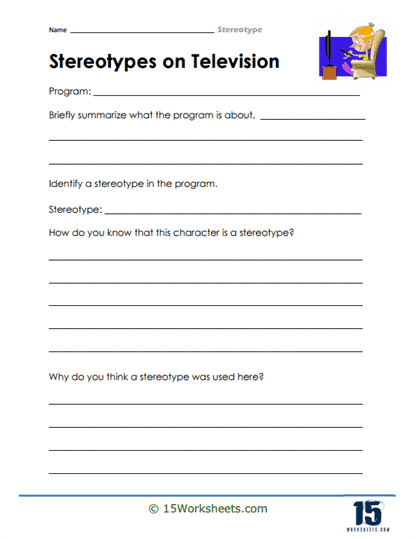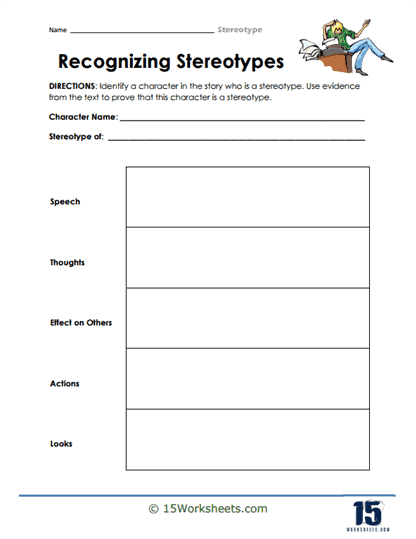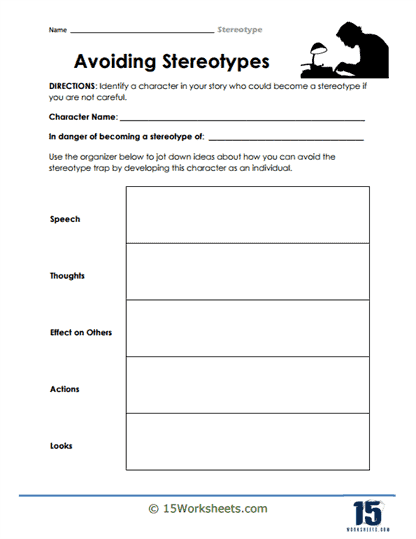Stereotypes Worksheets
All About These 15 Worksheets
This series of 15 worksheets is designed to foster critical thinking, empathy, and open-mindedness, as they provide students with a platform to examine and challenge stereotypes in a dynamic and engaging manner.
These worksheets empower students to explore the complexities of stereotypes through a variety of thought-provoking activities. They are crafted to encourage self-reflection, spark meaningful discussions, and develop students’ skills in analysis and effective communication. Through these worksheets, students will:
- Identify stereotypes present in their own lives and society by reflecting on their own experiences or through reading assigned texts;
- Investigate the consequences of these assumptions;
- Analyze real-life scenarios to develop a deeper understanding of how stereotypes can limit and harm individuals;
- Question preconceived notions;
- Challenge a wide range of stereotypical representations by considering alternative narratives, promoting inclusivity, and celebrating diversity;
- Express their thoughts and experiences in vivid detail;
- And learn to convey complex ideas and emotions.
By completing this series, students do not only expand their knowledge and develop analytical skills, but also become active agents of positive change in their communities. In summary, these worksheets can equip students with the tools necessary to challenge stereotypes, embrace diversity, and foster a more inclusive and understanding society.
What Are Stereotypes?
Has someone ever mistreated you because of the way you look or behave? Has someone close to you ever been discriminated against? The world we live in is dynamic and evolving. However, with change comes the need for acceptance, which is sometimes absent. Stereotyping is a common problem in modern society, born out of people’s inability to accept people for who they are. It has affected thousands of individuals worldwide. It’s essential to understand what stereotypes are to overcome them.
What Is Stereotyping?
A stereotype is an overgeneralized belief about a group or class and its members. It assumes that all group members embody the same characteristics or habits. It’s safe to say that stereotyping takes away the victim’s individuality; e.g., Gender X is more athletic than Gender Y.
Stereotyping results from social categorization, the mentality that proposes all homo sapiens either belong to an in-group or an out-group. People use social categorization to reduce the extent to which we need to think and process information about a person when we meet them for the first time. This enables them to infer who the other person is by making assumptions, whether positive or negative, instead of getting to know them as individuals.
The Positives & Negatives of Stereotyping
Stereotypes aren’t all bad. For example, writers are big thinkers. While positive stereotypes do exist, negative stereotypes outnumber them. The crux of the matter is that stereotyping does more harm than good. Stereotyping often emerges from prejudice and leads to discrimination. Many people are held back by stereotypes because others fail to acknowledge their individualistic traits.
Different Stereotypes You Should Watch Out For
Many stereotypes can harm victims severely by impacting their personal and professional lives. Here are a few examples of stereotypes you should watch out for to help limit them.
Racial Stereotypes
– X race is more reliable than Y race
– Y race is unintelligent
– X race is dangerous
– Marriages between X race & Y race never work out
– Y Race is the smartest
Gender Stereotypes
– X gender is superior to Y gender
– Y gender is weak
– X gender is smarter
– Y gender has no autonomy
– People of Y gender are terrible drivers
Religious Stereotypes
– Members of X religion are oppressive
– Members of Y religion are intolerant
– Members of Y religion are bad people
– Members of X religion are destructive
– Members of Y religion are peaceful
Stereotyping leads to adverse outcomes, which is why all stereotyping can be harmful even if the stereotype is positive.
Debunking the Concept
You can only debunk stereotypes by learning to be more accepting and widening your cultural knowledge. Accept people as individuals and not members of a particular group. Give them the chance to prosper without their gender, race, religion, or outlook holding them back.
Once you begin practicing acceptance, you can encourage your friends and family to be more open-minded as well. It takes one person’s decision to be better to stimulate further change. But, remember that you cannot change everyone, and it is not your responsibility to. But you can limit your interaction with narrow-minded people and surround yourself with liberal, tolerant individuals.

